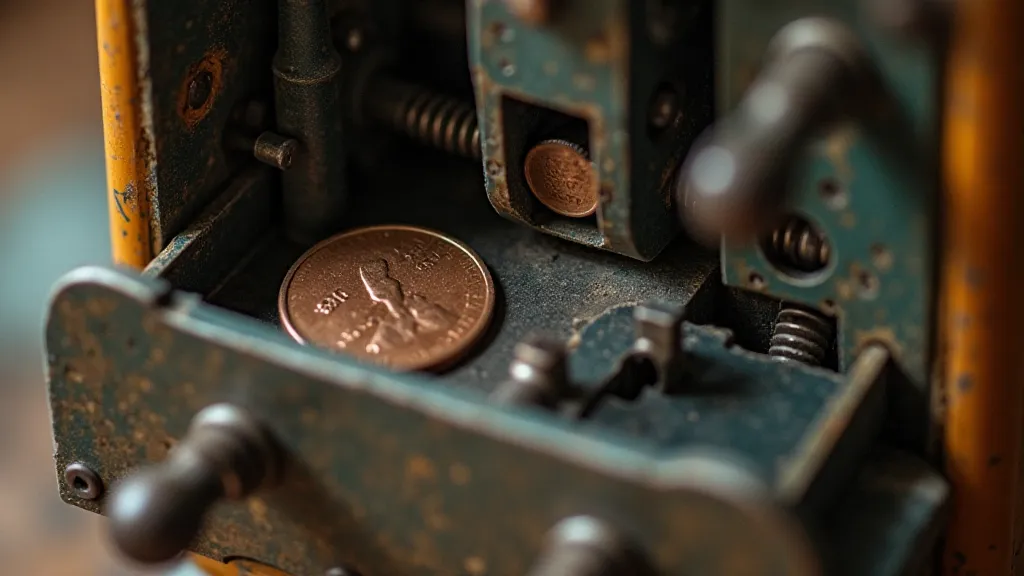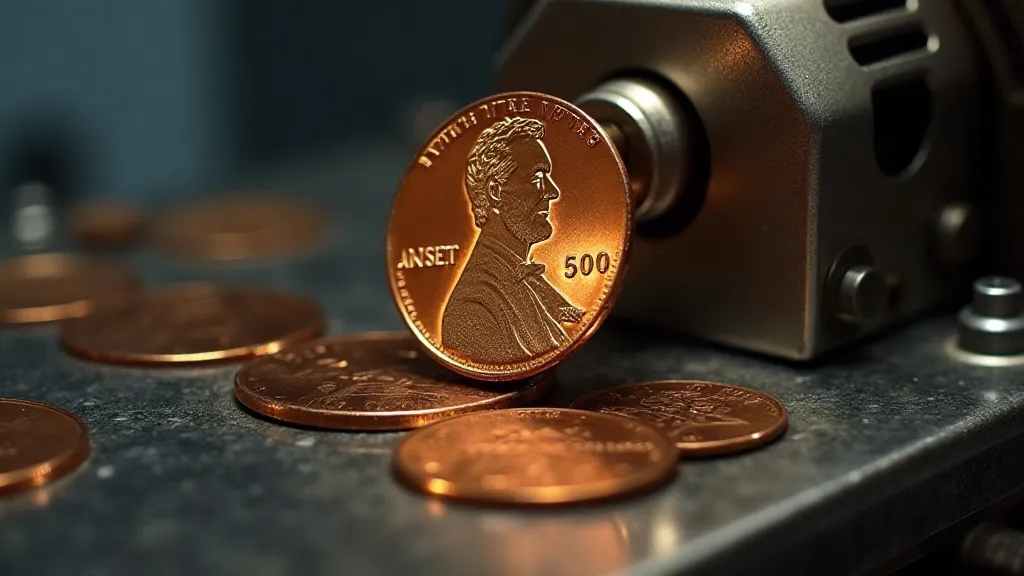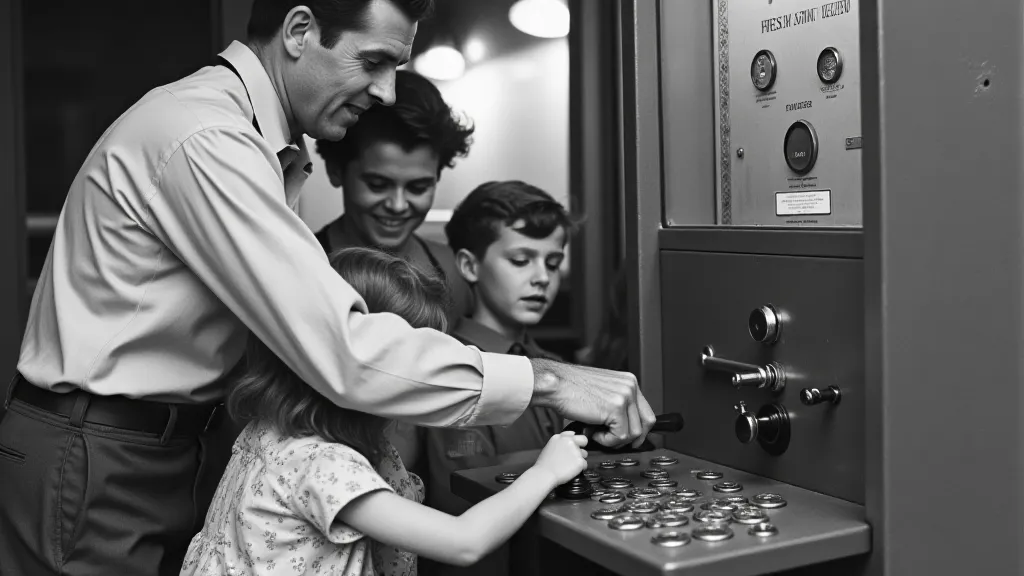The Collector’s Oath: Ethical Considerations in Pressed Penny Collecting
Pressed penny collecting. The words themselves evoke a sense of nostalgia, of childhood road trips, of the satisfying *clunk* of a machine doing its work, imprinting a fleeting memory onto a humble copper disc. For many of us, it’s more than just a hobby; it's a connection to simpler times, a tangible link to the places we’ve loved and the people we’ve shared those experiences with. But like any pursuit that involves interacting with something older than ourselves, with mechanisms and machines built by skilled hands, pressed penny collecting demands a code of conduct, a quiet understanding – an oath, if you will – of respect and responsibility.
My own journey into this world began not with a deliberate search for rare designs, but with a trip to a small-town amusement park. I was perhaps eight years old, and the thrill’s wasn’t just the rides; it was the tiny machine tucked away in a corner, spitting out souvenirs stamped with the park’s cheerful mascot. That first pressed penny felt like a treasure. It wasn't particularly rare, probably common even then, but it sparked a fascination. Years later, that early enthusiasm has blossomed into a deeper appreciation not just for the designs themselves, but for the history and craft behind them. It's a world surprisingly rich with stories, a testament to the cultural significance even something as simple as a pressed penny can hold.

Consider, for a moment, the machines themselves. These aren’t simply automated processes; they are the product of engineering ingenuity, often built by small businesses with a dedication to precision and durability. Many of the machines we find today, particularly the older models, are testaments to a different era, when craftsmanship and longevity were prioritized over planned obsolescence. To damage one, or to abuse its operation, is to disrespect the legacy of the individuals who built them. The transformation of a standard coin into a cherished souvenir isn't just mechanical; it’s a moment of alchemy, imbuing a piece of currency with memory and meaning.
Early pressed penny machines were often marvels of miniature engineering. They utilized a lever system, carefully calibrated to apply the correct amount of pressure without damaging the coin. Later models incorporated electric motors, bringing a new level of automation. Even now, these machines are complex and sensitive, requiring regular maintenance and careful handling to function properly. Think of the accordion, another marvel of mechanical artistry. Its bellows, its keys, the precise alignment of reeds – all relying on delicate balance and expert construction. A carelessly handled accordion can be ruined in seconds. The same principle applies to our beloved penny machines.
The machine itself is one aspect of the equation, but just as vital are the operators. These individuals, often local business owners or hardworking employees, are the keepers of the memory, the facilitators of our collecting passion. They’ve invested time and money into maintaining the machines, and they rely on the public to operate them respectfully. A rushed insertion, a forceful crank, a coin jammed in the mechanism – these seemingly minor actions can cause significant damage. The careful preservation of these machines and their operation is an act of cultural responsibility, contributing to a local identity often reflected in the very designs pressed into those pennies.
I recall a conversation I had with an elderly gentleman who operated a pressed penny machine at a historic train station. He’s been doing it for over thirty years, a fixture of the local community. He spoke with such pride, not just in the coins themselves, but in the role he played in preserving a piece of local history. He told me stories of families returning year after year, collecting memories and building traditions. It was a poignant reminder that this seemingly simple pastime connects people to place and time, forming a personal coin’s reflection of a place and its people.
The most straightforward ethical consideration is avoiding damage to the machines. This isn’t about complex rules; it's about common sense. Insert coins gently, crank the lever smoothly, and avoid forcing anything. If a machine seems to be malfunctioning, notify the operator – don't try to fix it yourself. This is paramount. Remember, each machine represents an investment, both financial and emotional, and its continued operation depends on the collective responsibility of those who use it. It’s about understanding that these aren’t disposable gadgets; they're enduring pieces of mechanical artistry.
Beyond the immediate mechanics, consider the wear and tear that constant use inflicts. Excessive force, attempts to retrieve stuck coins with inappropriate tools, and even enthusiastic but careless cranking can all contribute to premature failure. It’s a constant balancing act between enjoying the hobby and preserving its infrastructure. Proper organization of your collection is also key to preserving the hobby; carefully cataloging and storing your pennies ensures their longevity and contributes to the overall appreciation of the pastime. Many collectors find that documenting their finds helps them create their own pocket’s chronicle.

The pursuit of “rare” pressed pennies often fuels a frantic, almost competitive aspect of collecting. While rarity certainly adds interest, it's important to approach this aspect ethically. Avoid contributing to practices that could potentially damage machines or exploit operators in the quest for a valuable coin. There’s a subtle pressure to acquire specific designs, leading some to prioritize accumulation over appreciation. Collectors often find themselves captivated by the collector’s labyrinth of values and scarcity surrounding these seemingly simple souvenirs.
Furthermore, be mindful of the origins of your coins. While the vast majority are legitimately obtained from operational machines, instances of counterfeit or illicitly sourced coins do exist. Supporting reputable dealers and focusing on the joy of collecting, rather than solely on the monetary value, is crucial to upholding the integrity of the hobby. Beyond the value of the coins themselves, it's the story each penny tells – the place, the time, the memory – that truly makes them precious.
Organizing Your Collection: A Chronicle in Metal
Maintaining a well-organized collection isn’t just about aesthetics; it’s a vital aspect of responsible collecting. A system for cataloging your pennies, perhaps through a dedicated album or digital spreadsheet, allows you to track their origins, rarity, and condition. This not only enhances the enjoyment of the hobby but also contributes to the overall preservation of the pastime, allowing future generations to appreciate the history and artistry behind these unique souvenirs.
Consider incorporating descriptive notes with each penny – the location, the date, a brief anecdote about the experience. These details transform a simple coin into a tangible memory, a mini-narrative encapsulated within a circle of metal. Sharing your collection with others, whether through online forums or local collectors' clubs, fosters a sense of community and encourages responsible collecting practices.
The Collector’s Oath - A Promise to Preserve
Ultimately, pressed penny collecting isn't just about accumulating coins; it's about preserving a piece of history, a connection to a simpler time, and a respect for the craftspeople who created both the machines and the memories they create. It’s about acknowledging the responsibility that comes with engaging with something older than ourselves. It’s about fostering a community built on respect and shared appreciation.
The “Collector’s Oath,” then, isn't a formal declaration; it’s an unspoken agreement, a quiet understanding that guides our actions. It’s a promise to operate machines with care, to respect the operators, to avoid damage, and to prioritize the joy of collecting over the relentless pursuit of rarity. It’s a commitment to preserve this charming pastime for generations to come. It’s about recognizing that each pressed penny represents more than just a souvenir; it's a miniature window into the past, a tangible link to the people, places, and experiences that shape our lives.






